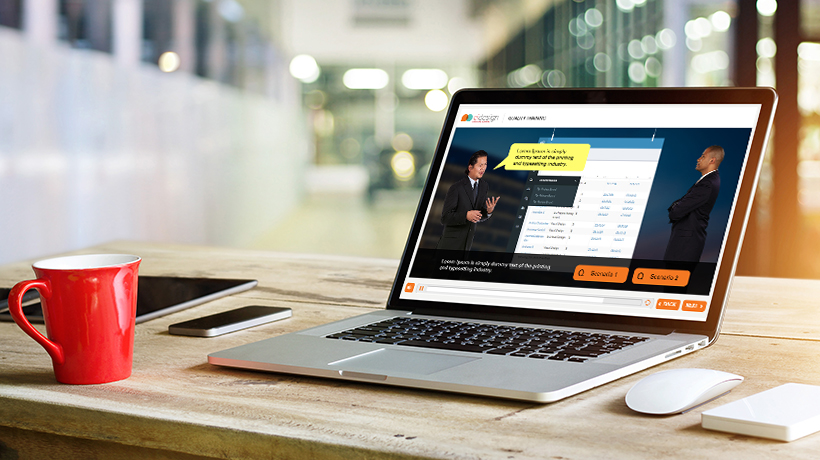
The post-2019 era is witnessing rapid changes in business landscapes. mLearning is imperative for rapid upskilling/reskilling at speed. In this article, I show you the value of mLearning and how to apply it in the corporate environment.
What is mLearning (Mobile Learning)?
mLearning, or Mobile Learning, represents the modern paradigm of “learning on the go,” leveraging the convenience and ubiquity of smartphones and tablets. This approach enables learners to engage with educational content fluidly across various devices, aligning perfectly with the evolving dynamics of today’s hybrid workplace.
mLearning adeptly addresses a broad spectrum of training requirements, encompassing Formal Training, Informal Learning, Just-in-time learning aids for instant knowledge access, Self-Directed Learning for personalized education paths, and Social or Collaborative Learning for interactive, community-based educational experiences.
What is the difference between mLearning and eLearning
- Purpose:
Unlike eLearning, which provides in-depth knowledge on specific subjects, mLearning focuses on supporting continuous learning through concise, bite-sized lessons for quick knowledge acquisition.
- Lesson Duration:
eLearning modules, providing comprehensive information, typically last 20-30 minutes. In contrast, mLearning modules are designed to be much shorter, usually under 10 minutes, catering to learners needing quick access to key information.
- Delivery Method:
While eLearning is generally accessed via desktops or laptops, mLearning utilizes mobile devices like smartphones and tablets, offering flexibility for learners to engage with content from anywhere.
What Are the Benefits of Mobile Learning?
Benefits for Learners
From a learner’s perspective, mLearning provides the following benefits:
- Training on the go or as they work from home.
- On-demand, anytime, anywhere access.
- Gives them control on when and how to consume content.
- Enables them to consume at their own pace.
- Can be pulled by them, as required (rather than pushed).
- Syncs with their lifestyle.
Benefits for Organizations and L&D Teams
Here are the key benefits mLearning offers organizations and L&D teams:
- Address remote learners as well as a geographically spread-out audience.
- Higher engagement.
- Better completion rates.
- Easy to update and re-deploy.
- Lower costs as compared to classroom/ILT.
What Are the Advantages of mLearning in Corporate Training?
-
Availability:
mLearning is Self-paced Online Training that is available to the learners anytime and on the go – across mobile devices (tablets and smartphones). Ideally, the same training would be available on desktops/laptops allowing learners to learn on the device of their choice.
-
Usability:
The technology support to create effective mLearning has kept pace and the range of authoring tools offer several tracks of options. By looking at how the training will be consumed, you can decide between mobile-friendly (Adaptive) or mobile-first (Responsive designs).
-
Convenient size:
mLearning offers tremendous flexibility, even in terms of its size, to learners to choose the device they wish to learn on, when they want to learn and, most importantly, at the speed at which they can consume and assimilate the learning.
-
Social touch:
If learners need something urgent, they are likely to drop in a message in one of their WhatsApp groups or other chat applications (collaborative/social learning). The change in learner attitude in terms of getting to know what they want to know clearly warrants the adoption of the mLearning approach.
-
Engagement:
Learners prefer formats that engage them better. These include formats like videos, animated videos, interactive videos, or podcasts that were not part of traditional eLearning but are an integral part of mLearning.
Challenges of mLearning in Corporate Training
-
Technical Limitations:
mLearning applications depend on the device’s software, which can be impacted by various external factors such as system crashes, outdated versions, and compatibility issues. These technological discrepancies can affect the effectiveness of mLearning tools.
-
Connectivity Issues:
In areas with limited internet access or unreliable electricity, such as some rural regions, implementing mLearning is challenging due to these infrastructural constraints.
-
Potential for Distraction:
As mLearning primarily utilizes mobile phones, there’s a risk of distractions from social media or games, which can divert learners’ attention from educational content.
Design Approaches in mLearning: Mobile-Friendly vs. Mobile-First Designs
In the realm of mLearning, there are two primary design approaches: Mobile-friendly (Adaptive) and Mobile-first (Responsive).
Mobile-friendly (Adaptive) Designs: These designs provide multi-device support, adapting content to fit various screen sizes from laptops to tablets. However, they are primarily aligned with laptop/desktop usage patterns. On smartphones, these designs are most effective in landscape mode, and may exhibit excess blank space in portrait mode, indicating a misalignment with typical smartphone interaction patterns.
Mobile-first (Responsive) Designs: Contrarily, Mobile-first designs are crafted with smartphones as the primary consideration, later extending compatibility to tablets and desktops. This approach ensures content dynamically adjusts to the screen size, offering an optimal viewing experience. Significantly, it also aligns learning interactions with the natural usage patterns of mobile devices, thereby enhancing user engagement and learning efficiency.
Best Practices for Designing Mobile Learning
- User-Centric Design: Focus on intuitive navigation and user-friendly interfaces.
- Responsive Content: Ensure that content adapts to various screen sizes and orientations.
- Engaging Multimedia: Utilize a mix of text, images, videos, and interactive elements.
- Chunking Information: Break down content into smaller, digestible units.
- Accessibility: Design for diverse learners, including those with disabilities.
The Evolving Significance of mLearning in the Modern Corporate Landscape
The relevance of mLearning in today’s corporate world is marked by several key factors, reflecting the ongoing evolution in workplace dynamics:
- Post-Pandemic Work Environments: The enduring effects of the COVID-19 pandemic have established remote working as a standard practice, necessitating mLearning solutions that cater to the needs of home-based employees.
- Ubiquitous Smartphone Usage: The widespread daily use of smartphones makes integrating learning into these devices a natural and efficient progression.
- BYOD Policies: More organizations are embracing Bring Your Own Device (BYOD) policies, offering learners the flexibility to access training on their preferred devices.
- Seamless Learning Integration: Modern learners seek integration of educational resources into their workflow, minimizing the need for frequent logins to traditional Learning Management Systems (LMS).
- Preference for Engaging Content Formats: There’s a growing preference for engaging and interactive content formats such as videos, animated videos, interactive videos, and podcasts, which enhance the learning experience beyond conventional eLearning methods.
How Do You Implement mLearning in Corporate Environments?
-
Top tips for success with mLearning:
You can offer Personalized training in an mLearning format to meet varied employee training needs, notably:
- At the moment of need (Just-in-time learning or Performance Support Tools).
- To practice and acquire skills to succeed at the current job.
- To improve specific skills that align to business goals.
- New skills or skills to nurture in the business.
- Leadership development skills.
-
Make onboarding easy:
Any corporate training initiative, including employee induction and onboarding, that’s traditionally delivered in the ILT form, could benefit from a mLearning training approach.
-
Make your training program mobile-friendly:
As mentioned earlier, Mobile-friendly designs reflect the more universally available Adaptive approach to design mLearning courses. The designs feature multi-device support but they still map to the way learners use the laptops/desktops.
-
Utilize Microlearning to boost retention:
The appropriate use of Microlearning in combination with mLearning helps meet learning outcomes – at par with other learning strategies and create better recall and retention.
-
Use video content:
A versatile medium, Videos and Interactive Videos are great tools to help L&D teams for corporate trainings and mLearning is the logical way to deliver them to the learners. You can leverage mLearning for Video Based Learning or Interactive Video Based Learning to boost the impact of learning:
- Teaser Videos to increase engagement and motivate learners.
- Conceptual Videos.
- Videos to set the context.
- Videos to accelerate change management initiatives.
- Videos highlighting Scenario Based Learning (SBL) to drive change in thinking and behavior.
-
Integrate Gamification:
With the increased adoption of Gamification and Microlearning in online training, Mobile Apps for training can leverage short, bite-sized, focused learning nuggets that can be presented over a Gamified learning path. This further augments the impact they have.
-
Encourage binge-learning:
mLearning enables learners to access training on the go and switch across learning devices – from smartphone to tablet and then to laptop – and continue learning on the go, wherever they are (subway, cafeteria, home, or airport).
Parting Thoughts
I hope the insights shared in this article on the value and significance of mLearning help you implement it effectively in your corporate training environment.



